Dell U3011 Review: Dell's New 30-inch Flagship
by Brian Klug on January 13, 2011 9:17 PM ESTHardware Impressions and Specs
If there's one thing I've learned doing display reviews, it's that the 30-inch segment represents (as it should) the best of the best. Entries here have the most input options, features, best panels, and the highest resolution you can get for the money. It's a breath of fresh air to play with a real 16:10, 2560x1600 display after toying with 1080P monotony for so long. If the displays industry worked anything like the CPU industry, we'd have 300 PPI displays with no response lag, infinite contrast, and all for way less than we're paying now. If there was a new year's resolution display manufacturers should make, it's that they stop making 1080P panels in 2011.
Anyhow, today we're talking about the Dell U3011. I got the chance to review HP's 30 inch monitor, the ZR30w, back when it launched, and will use it as a mental comparison. The Dell U3011 is a refresh of the Dell U3008WFP, and brings a 10-bit per color panel with 12-bit internal processing, more input options, factory calibration (more on that later), and is supposedly 1 ms faster in the response time department.
The specs for Dell's new 30 inch display are in the table below:
| Dell UltraSharp U3011 | |
| Video Inputs | 2xHDMI, 2xDVI-D w/HDCP, 1xDisplayPort, VGA (D-SUB), Component |
| Audio Output | 3x3.5mm audio jacks (5.1 audio out supported) |
| Panel Type | H-IPS with CCFL Backlight (Panel: PH5NY07U076L) |
| Pixel Pitch | 0.2505 mm |
| Colors | 1.07 billion (30 BPP color - 12 BPC internal processing) |
| Brightness | 370 nits (typical) |
| Contrast Ratio | 1,000:1, or 100,000:1 (dynamic) |
| Response Time | 7 ms (GTG), 17 ms (GTX max) |
| Viewable Size | 30" (756.23 mm) |
| Resolution | 2560 x 1600 at 60 Hz |
| Viewing Angle | 178 degrees horizontal and vertical |
| Power Consumption (operation) | 250 watts (max), 110 watts (typical) |
| Power Consumption (standby) | 2 watts standby, 1 watt off |
| Screen Treatment | Matte/Anti-Glare, Hard Coating |
| Height-Adjustable | Yes: 3.55 inches travel |
| Tilt | Yes: 10 degrees - 20 degrees |
| Pivot | No |
| Swivel | Yes |
| VESA Wall Mounting | Yes: 100 mm x 100 mm |
| Dimensions w/ Base (WxHxD) | 27.34" (694.5 mm) x 22.5" (571.3 mm) x 8.32" (211.3 mm) |
| Weight | 27.72 lbs (12.6 kg) with stand, 20.40 lbs (9.3 kg) without stand |
| Additional Features | Integrated USB 2.0 hub with 4 USB ports, 7 in 1 media reader, 5.1 audio pass through, factory calibration |
| Limited Warranty | 3 years - repair or replacement |
| Accessories | Power, DVI, DisplayPort, VGA cables. Factory Calibration Report. |
| Price | U3011: $1349.00 |
So first up is the display itself. Aesthetically it's almost exactly what you'd expect from Dell in a monitor, and follows their relatively consistent industrial design quite well. The display bezel is entirely black plastic just like we've seen with almost every other Dell, and there's a huge square black stand.
The U3011 has a silver-colored strip that runs around the outside of the display, much like the ZR30w has. However, unlike HP's metal strip, Dell's is plastic. The display bezel on the U3011 is just under 1 cm thinner at the edge than HP's, though both get much thicker at the center.
The stand the U3011 comes with is decently sturdy, providing tilt, rotation and height adjustment, but no pivot. Height on the U3011 can adjust from about 3 cm to 12 cm from the top of the plastic stand to the bottom of the bezel. Dell advertises 10 cm of travel - I can definitely see that much travel, which is definitely welcome. The other added bonus is that HDMI, DVI, and DisplayPort cables don't crash into the plastic base and bend worrisomely even with the display at its lowest height adjustment setting. I wish the U3011 went up a bit higher, because it seems like I inevitably use the highest adjustment point whenever I'm connecting cables, but too lazy to rotate the whole monitor. It's just shy of being tall enough where I can squeeze my head underneath - oh c'mon, everyone does that, right?
There's also about 30 degrees of tilt in the up direction, and about 5 degrees downwards.
Rotation on the base is about +/- 30 degrees, which is more than sufficient. Thankfully, the base on the U3011 is nice and smooth through the rotation, with no annoying backlash or chatter which generally makes entire displays and desks shudder.
Dell has placed the 7 in 1 card reader (xD/SD/MS/MMC) on the left side of the U3011. Down below it are two of the four USB 2.0 ports connected to the U3011's internal hub.
The lower one has a power symbol which indicates that it's capable of supplying more current - 1.5 amps of it to be exact, for 7.5 watts of charging power. Though that should be more than sufficient to charge an iPad, connecting one resulted in the same "Not Charging" behavior one would see from a normal 500 mA port. It's unclear to me whether the USB charging specification is being implemented correctly on the display or not. Other devices charge fine, but likewise do so on normal 500 mA ports. In addition, the USB ports only provide power when the upstream USB-B port is connected - you can't use the ports to just charge devices without connecting the hub to something. I tested a 32 GB SD card in the reader, which worked just fine as well.
The backside of the U3011 is nothing new or special if you've seen Dell's other recent display designs. It's just scaled up to be larger, and looks the same. Personally, I find it classy and applaud the consistency, even if the Dell logo up top is positively gigantic (but then again, everyone does that). The stand has a cable routing port, but lacks positioning clips or guides like I've seen on other displays.
Finally, the I/O ports on the U3011 are where they should be at the base of the display, but high enough up that we don't run into cable routing issues. The U3011 also has a nice sticker facing outwards with all the ports positioned appropriately - something super useful when connecting things up from a weird contorted angle. The U3011 provides a ton of input options - two DVI-D ports, two HDMI 1.3a ports with Deep Color support, D-SUB for VGA, DisplayPort, and component video in. Moving along are the two remaining USB 2.0 downstream ports, USB-B upstream port, and lastly three 3.5mm audio out jacks for doing 5.1 audio pass through from HDMI. Oh, there's also a DC power jack in case you're using the Dell speaker bar with the U3011 which is an added accessory - we didn't get a chance to try that. I'd say the input options on the U3011 are impressive overall, just like we expect from a 30-inch display.
If you use your own VESA mounts with displays, the U3011 will work as long as you get one beefy enough for it. The weird part about the U3011's mounting arm is that it connects to the 100 mm VESA mount on the backside of the display with 4 T-10 Torx screws. That just seems like an obtuse choice for something which should be easily user-accessible. It's a small nit to pick, but this choice just really puzzles me since I doubt average users have all the Torx bits sitting around.
The U3011 is supposed to come calibrated from the factory, accompanied by a calibration report showing Delta-E tracking averaging below 5.0. Our U3011 came with no such report, and as we'll show later also didn't perform very well out of box in our color tracking validation test. We later learned that this is because our U3011 is a pre-production sample which is identical to the shipping model, just without factory calibration. In addition our panel was the A00 revision.
Last but not least is packaging. The U3011 packaging is generic and doesn't draw attention - there's Dell written on it, and U3011 on the corner. It's like the other Dell packaging I've seen before. What I found interesting is that the U3011 comes fully assembled and in one piece inside the box. The mounting arm is preattached, and two styrofoam pieces at top and bottom which hold it securely. The U3011 packaging is actually far smaller than HP's for the ZR30w.
More shots of the U3011 in our gallery below:



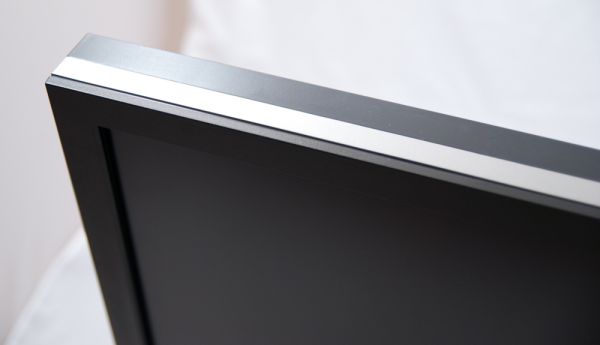

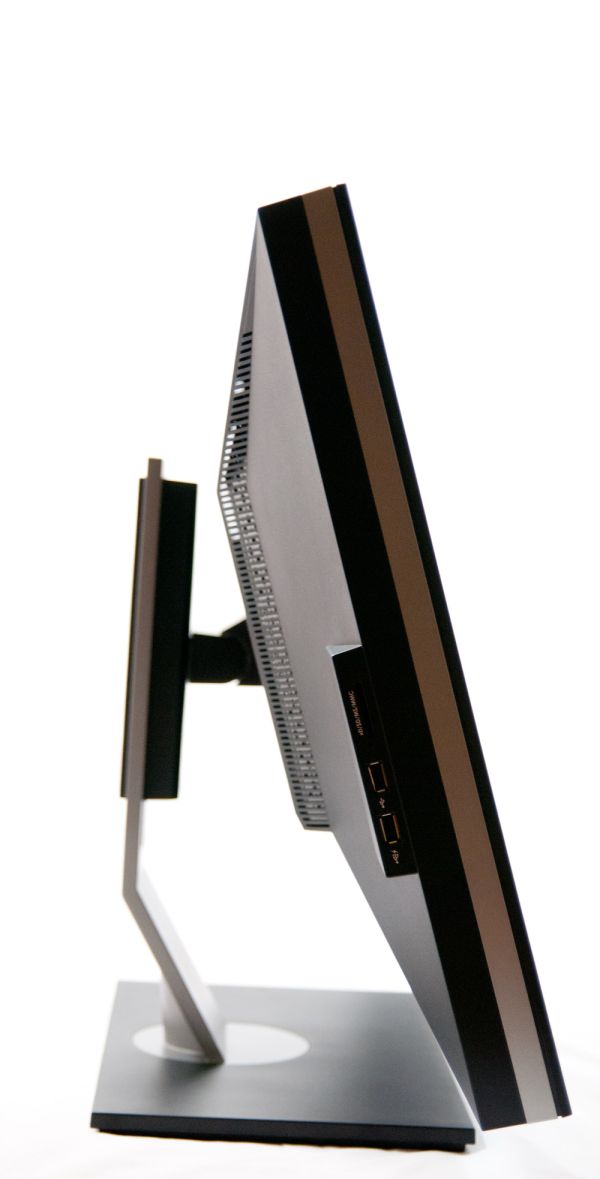
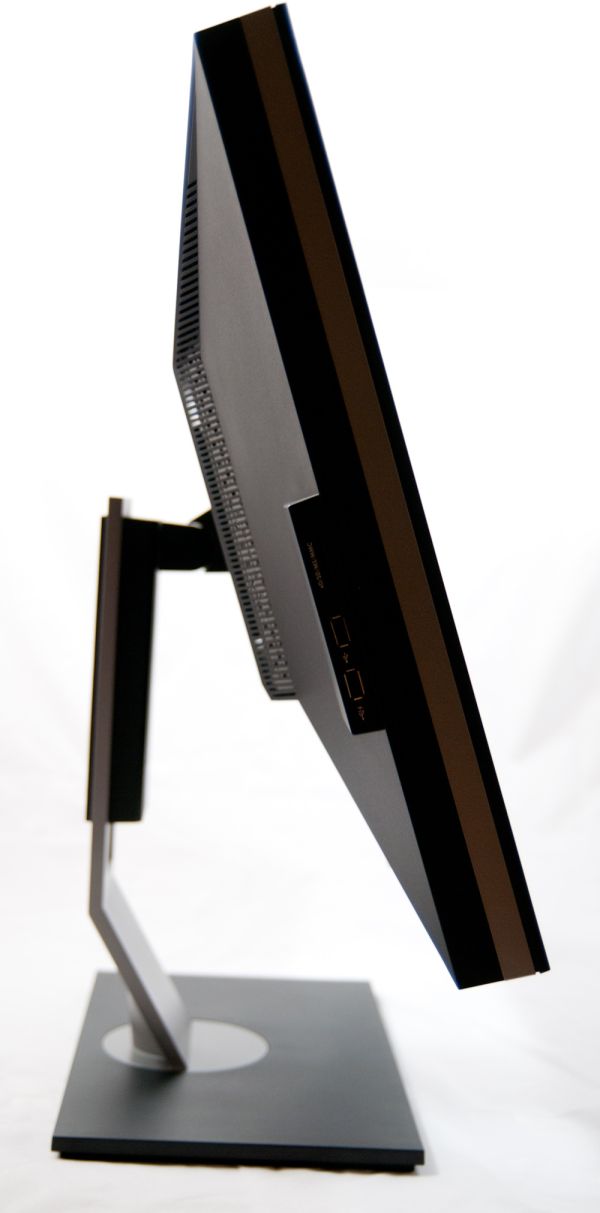
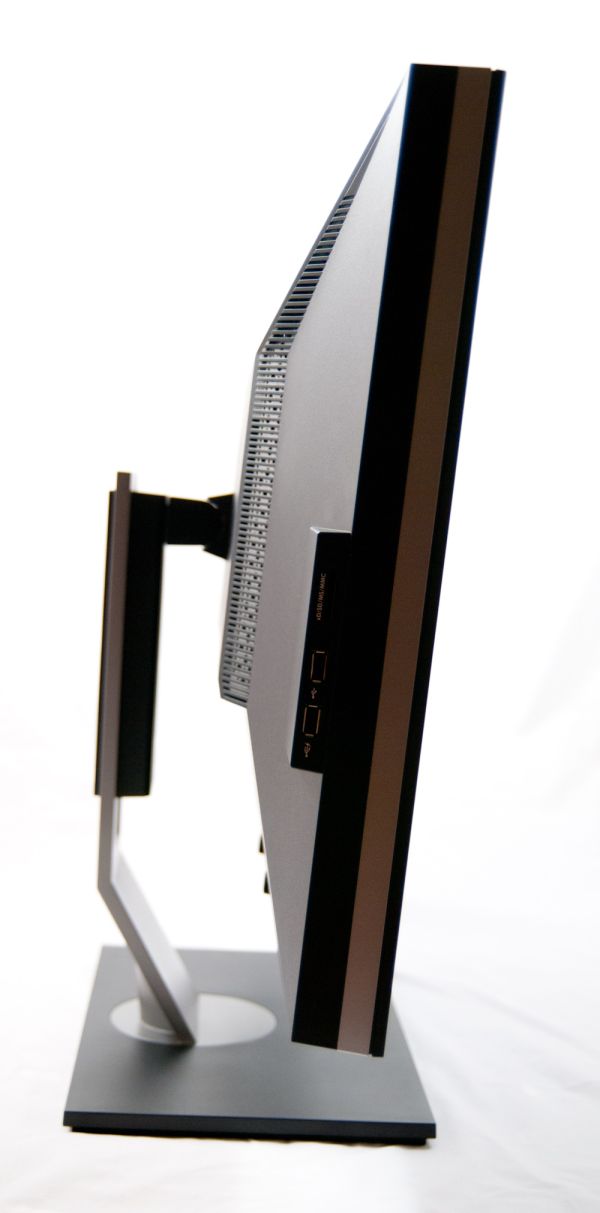
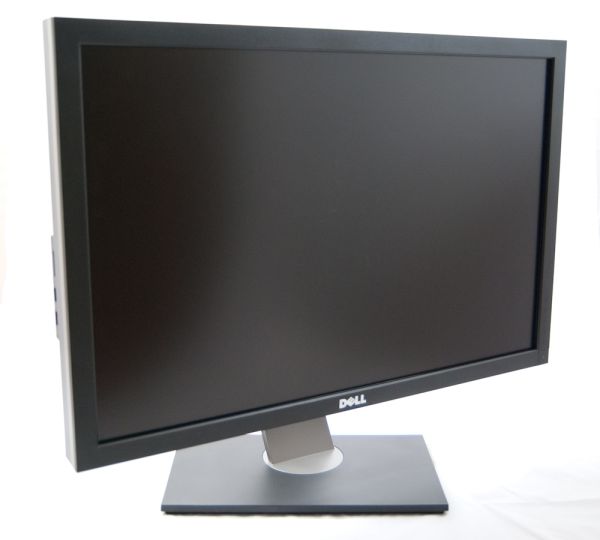
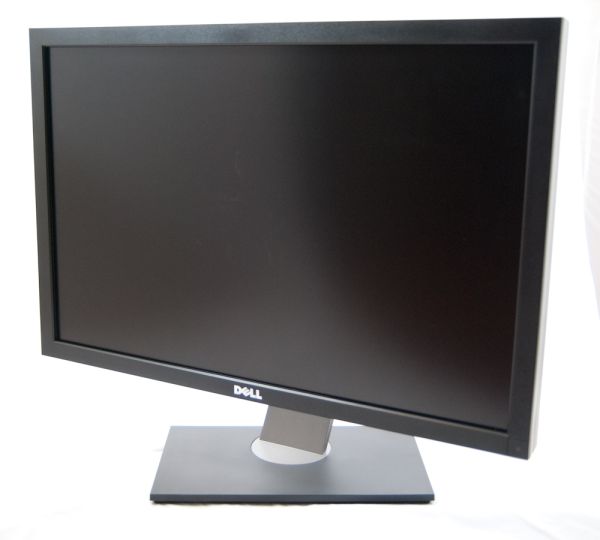
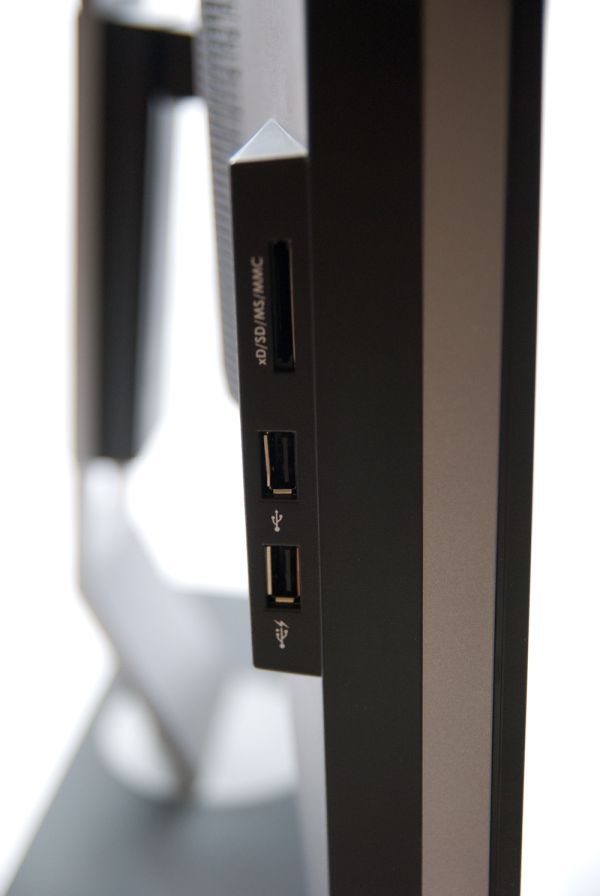
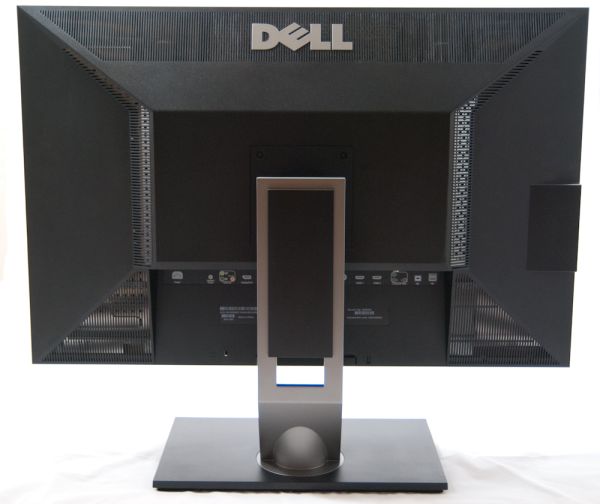
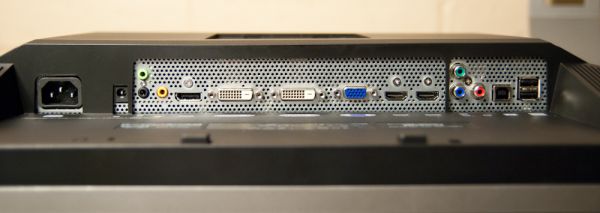

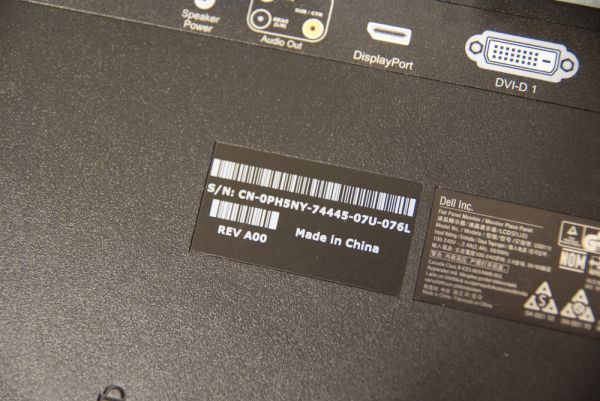















123 Comments
View All Comments
MeanBruce - Friday, January 14, 2011 - link
When is Dell going to start offering LED backlighting for it's UltraSharp lineup? 24" 27" and 30" We are waiting!cjl - Friday, January 14, 2011 - link
The thing is, WLED backlighting is actually worse image quality than CCFL, and RGBLED is both expensive and still has problems with lifetime. All the lower end monitors love to advertise LED because it sounds great and new, and it's definitely the way to go if your goal is low power consumption and heat. However, for the absolute best display quality, CCFL is the way to go (unless you go to the insanely expensive RGBLED screens).Pessimism - Friday, January 14, 2011 - link
CCFL=FAIL.Have you placed a year old CCFL-Based laptop next to a brand new one? You'll see a large drop in brightness and a noticeable yellowing of the picture. The manufacturers use the cheapest CCFL tubes humanly possible with short-lived phosphors. Additionally they make them near impossible to access to replace, when they could easily place them behind a removable panel with a quick disconnect connector to replace them.
I'll take my chances with LED.
ClownPuncher - Friday, January 14, 2011 - link
We aren't talking about laptop backlighting here.cjl - Friday, January 14, 2011 - link
Yes, laptops use short-lived, cheap CCFLs. This isn't a laptop. High end IPS monitors use high end, wide gamut CCFL backlighting which is much better quality than any laptop backlighting (and also more power hungry, which is one of the reasons it's not good for laptops). Have you ever seen a high end CCFL backlit monitor? They absolutely blow away WLED (which is what the vast majority of LED screens use). RGBLED would be nice, but as I said before, it's both quite expensive and it still has a few unresolved issues.semo - Friday, January 14, 2011 - link
Yeah would have been nice to see RGB back lighting on the latest, greatest and most advanced display of a company's lineup. This thing won't be replaced for the next 3 years at least I would imagine.Anyway, I would prefer 3x 24" monitors instead of one or two 30" if I had the money to burn.
DanNeely - Friday, January 14, 2011 - link
I have a 30" and 2 20" 1200x1600 panels on my main system now (all bought before eyefinity was an option). I don't think I could ever go back to a smaller main screen. I makes my 22 (1680x1050) and 19" (1280x1024) combo at work frustrating to use at times. For everything except eyefinity gaming I'd recommend one 30 over 2 smaller screens; and I suspect most people who can afford a 30 will also have at least one additional monitor hooked up.DanNeely - Sunday, January 16, 2011 - link
The replacement time probably will depend on when a significantly better panel becomes available. The 3007 was followed by the 3008 when a wide gamut panel was available. Nothing major changed on the next few years, so Dell didn't do a refresh until this year. And at least on paper the only thing that really changed was the addition of 10bit color, and the addition of a 2nd HDMI port in place of several legacy connections; I suspect this refresh had more to do with 08 looking like an obsolete model year than anything else.An RGBLED backlight that lasted long enough and that didn't break the bank would be grounds for a major update. A USB3 hub or Lightpeak support could trigger another minor refresh next year. If the memory card reader only supports SDHC an SDXC update could trigger a new minor revision as well.
ZoSo - Friday, January 14, 2011 - link
I'm still debating myself with getting the U3011 or ZR30w, reason being I do game often.But lately photo and video editing has been in the picture more and more. And of course I'd be watching movies too ;)
Decisions, decisions, it's a love hate thing,,, lol
bigboxes - Friday, January 14, 2011 - link
Thanks Brian. I was just about to comment on the lack of NEC models in your comparison charts. I know I will be upgrading soon and a monitor is so important. I spend so many hours a day staring at this device that it makes all the difference when you have a high-quality display.